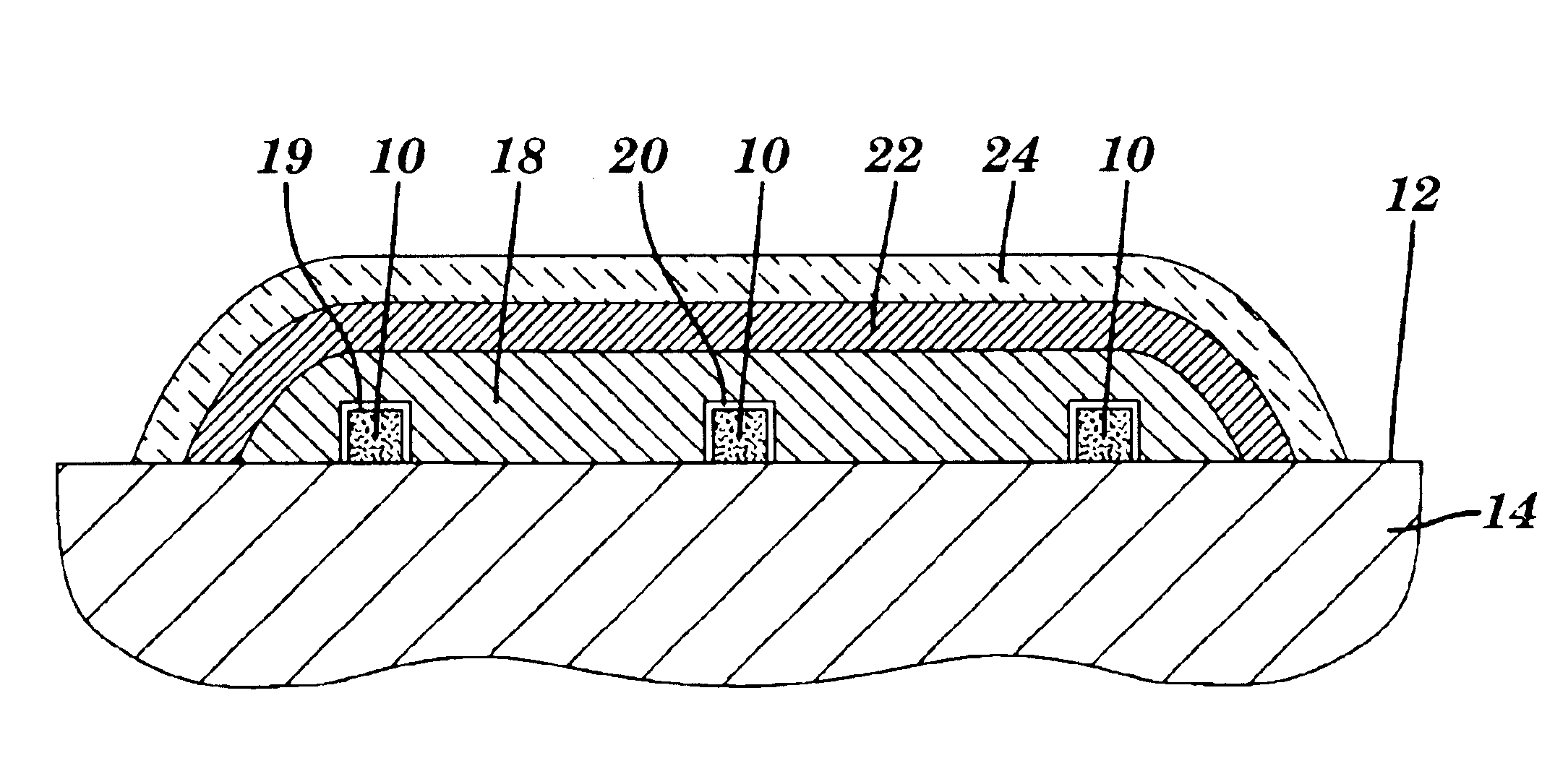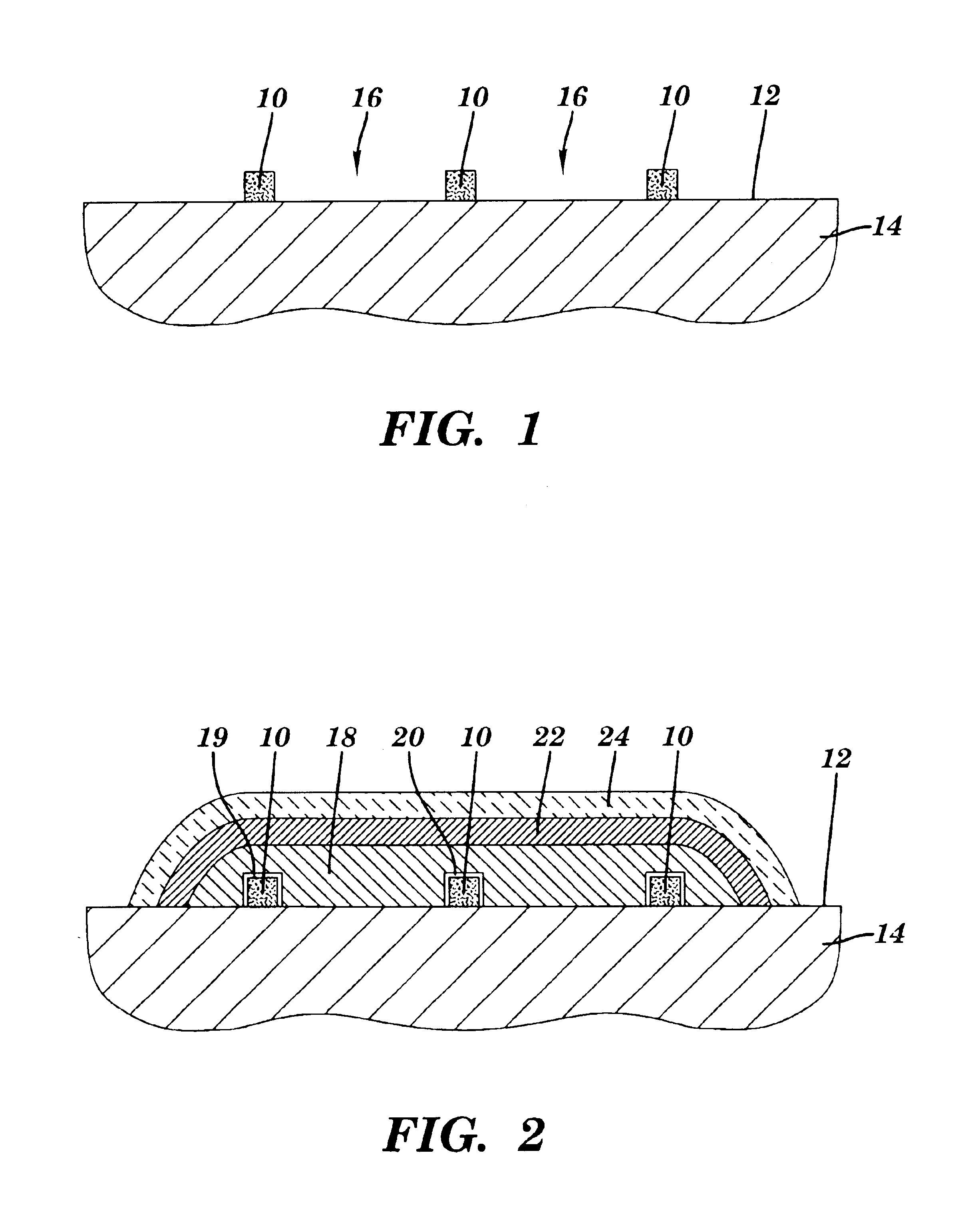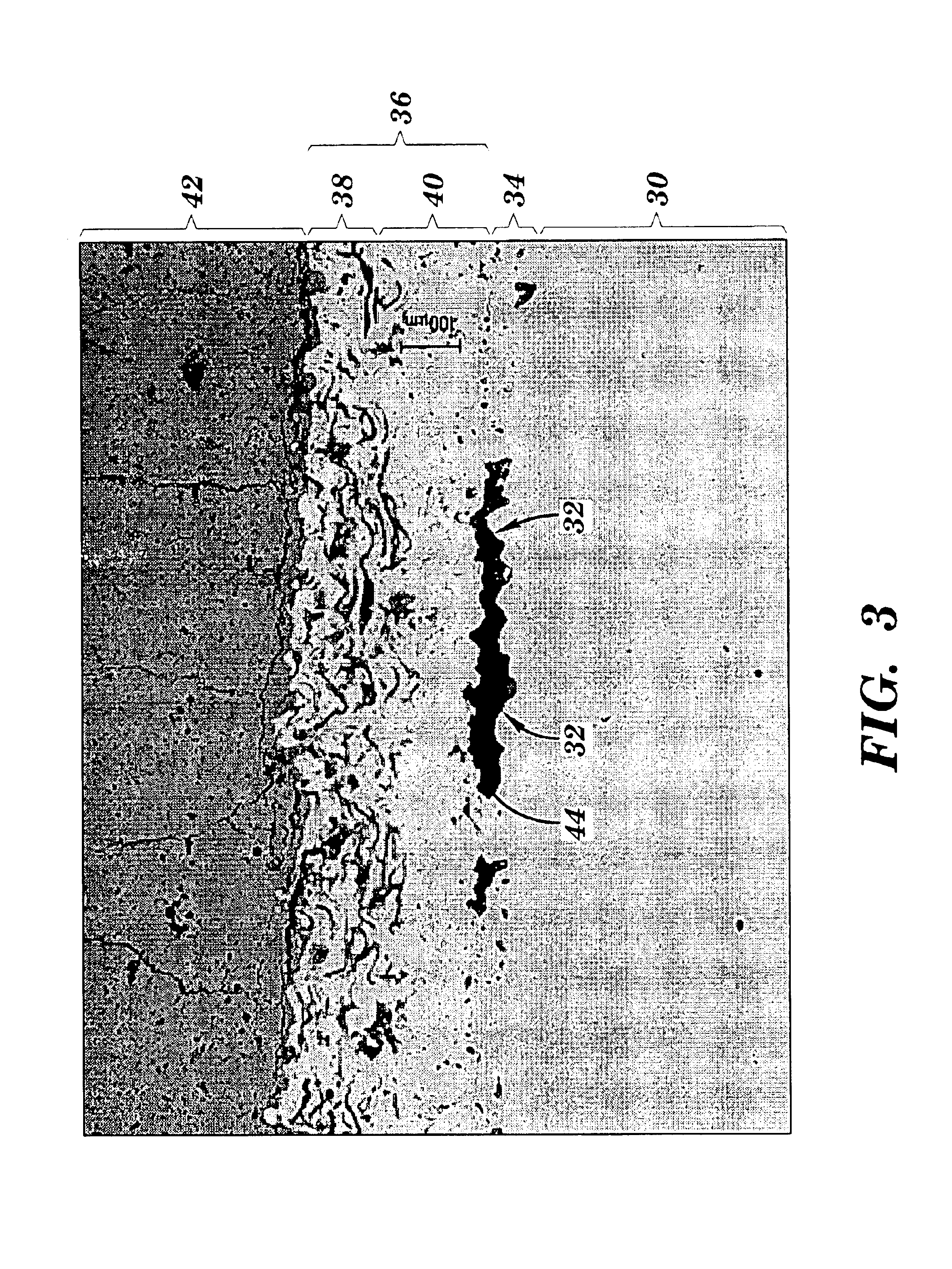Method for forming a channel on the surface of a metal substrate
a metal substrate and surface technology, applied in the direction of soldering media, fluid speed measurement, rocket engine plants, etc., can solve problems such as channel formation
- Summary
- Abstract
- Description
- Claims
- Application Information
AI Technical Summary
Benefits of technology
Problems solved by technology
Method used
Image
Examples
Embodiment Construction
[0028]The metal-based substrate of this invention can be formed from a variety of metals. The term “metal-based”, as used herein, describes substrates which are primarily formed of metal or metal alloys, but which may also include some non-metallic components. “Non-metallic” refers to materials like ceramics, or intermediate phases. Usually, the substrate is a heat-resistant alloy, e.g., superalloys which typically have an operating temperature of up to about 1000-1150° C. The term “superalloy” is usually intended to embrace complex cobalt-, nickel-, or iron-base alloys which include one or more other elements, such as aluminum, tungsten, molybdenum, and titanium. Superalloys are described in many references. Nickel-base superalloys typically include at least about 40 wt % Ni. Cobalt-base superalloys typically include at least about 30 wt % Co. The actual configuration of a substrate may vary widely. For example, the substrate may be in the form of various turbine engine parts, such...
PUM
| Property | Measurement | Unit |
|---|---|---|
| Percent by mass | aaaaa | aaaaa |
| Depth | aaaaa | aaaaa |
| Depth | aaaaa | aaaaa |
Abstract
Description
Claims
Application Information
 Login to View More
Login to View More - R&D
- Intellectual Property
- Life Sciences
- Materials
- Tech Scout
- Unparalleled Data Quality
- Higher Quality Content
- 60% Fewer Hallucinations
Browse by: Latest US Patents, China's latest patents, Technical Efficacy Thesaurus, Application Domain, Technology Topic, Popular Technical Reports.
© 2025 PatSnap. All rights reserved.Legal|Privacy policy|Modern Slavery Act Transparency Statement|Sitemap|About US| Contact US: help@patsnap.com



